What Multi-Vendor is Capable Of
A Multi-Vendor store is an e-commerce mall—different vendors sell their products in a shared marketplace, and the root administrator regulates vendors’ activities.
Generally, Multi-Vendor stores sell common products, like electronics, apparel, video games, cosmetics, and others, from various vendors. But Multi-Vendor is not only about selling electronics and apparel—it’s open to your creative ideas.
We’d like to show you 3 Multi-Vendor stores that use creative business ideas.
Tombokka
The Tombokka store offers apparel, cushions, bags, wall clocks, phone cases, and laptop sleeves with unique designer prints.
Tombokka has a catalogue of its vendors, who are actually artists. Each artist creates prints in his or her own style—you will find a t-shirt to your taste or a wall clock that matches your interior.
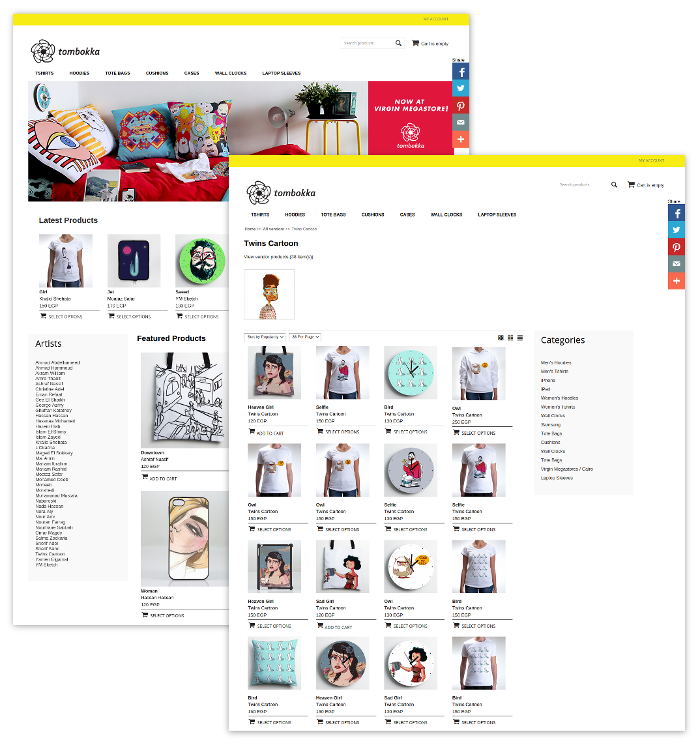
For the Man I Love
For the Man I Love is another Multi-Vendor marketplace that uses a creative idea—it specializes on gifts for men only.
Sometimes, finding a gift for a husband or a boyfriend becomes a real challenge. For the Man I Love helps to find the right gift for the modern man. The store offers a great choice of grooming products, accessories, menswear, gadgets, and other products from vendors all over the world.
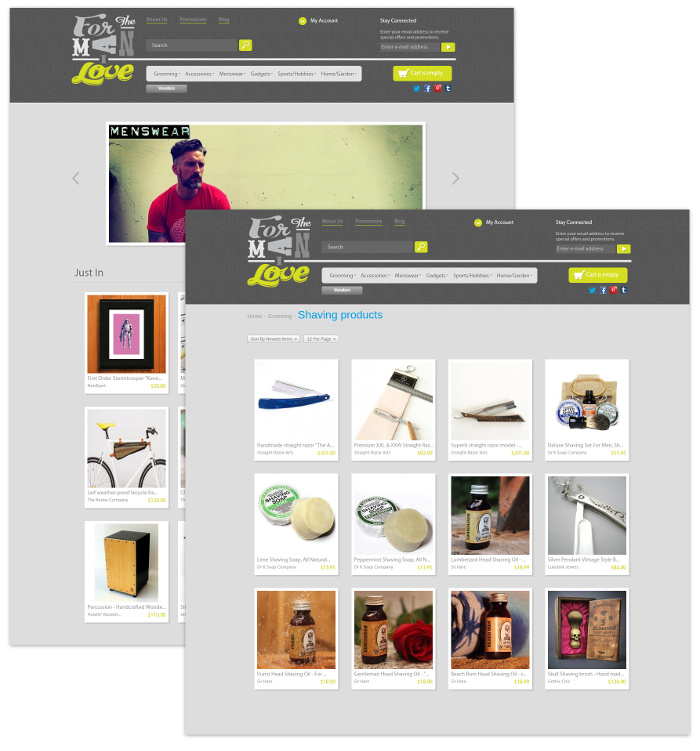
Prondo
Prondo is an online publishing company from Russia.
Although this website uses an old version of Multi-Vendor, it combines impressive features in one place:
- Self-publishing for authors—authors publish their books keeping the copyright
- Selling e-books—after an author publishes a book, he or she sells it as an e-book
- Printing books on demand—Prondo prints a copy of a book after a customer orders it; also, an author can demand 36 or more copies printed for personal needs or distribution
- Publishing services by the Prondo team—designing book covers, editing, proofreading, marketing, and other services
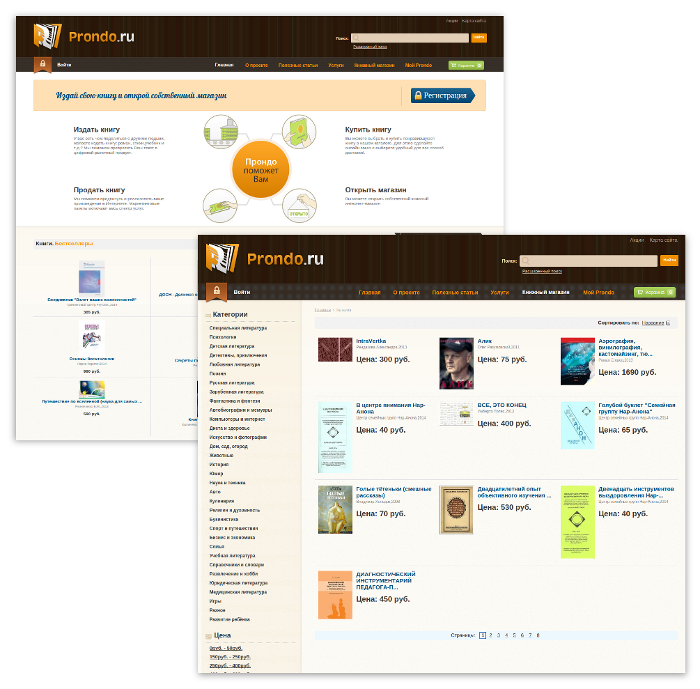
There are a lot of creative business ideas around you, and Multi-Vendor can help you convert them into reality.
Follow us on Facebook and Twitter to stay in touch with the latest CS-Cart and Multi-Vendor announcements.
Build the eCommerce Mall of Your Dreams with Multi-Vendor
Hi, how are you?
The eCommerce world has really grown recently, but still has a great outlook for further growth. Amazingly, 80% of the web population has yet to purchase products online.
If you’re thinking about diving into eCommerce, or you’re already in and have a couple of original business ideas, then our Multi-Vendor will help you transform your ideas into a live eCommerce mall.
With Multi-Vendor you can build your own eBay, an eCommerce mall, where different sellers offer their products in a shared marketplace, and you regulate sellers’ activities.
Today, we’d like to share with you three Multi-Vendor marketplaces that use original ideas and look cool. Check out the previous set of marketplaces in another post about Multi-Vendor.
Yumbles
Yumbles is all about hand-crafted yummy food.
The idea of Yumbles is to connect food lovers with independent food and drink producers all over the UK. Guys from Yumbles carefully hand pick the food makers to work with, so you’ll only find the most original and incredible food on the marketplace.
Since the sellers on Yumbles are indie food and drink makers, you order directly from them. Makers only use carefully sourced local ingredients and make their foods fresh to order for you.
A particular feature of Yumbles is the Gifts section, where you can find gifts almost literally for everyone! Choose gifts by recipient, occasion, personality, and price. You can even make a gift yourself with a “Make-it-yourself kit”, or get a gift within one day by ordering one from the Last minute gift category.
Another unique feature of Yumbles is the Community section. This section is full of recipes for everyday cooking, baking, health food, and food for special occasions. You’ll also find articles with cooking tips, fitness articles, and other recommendations.
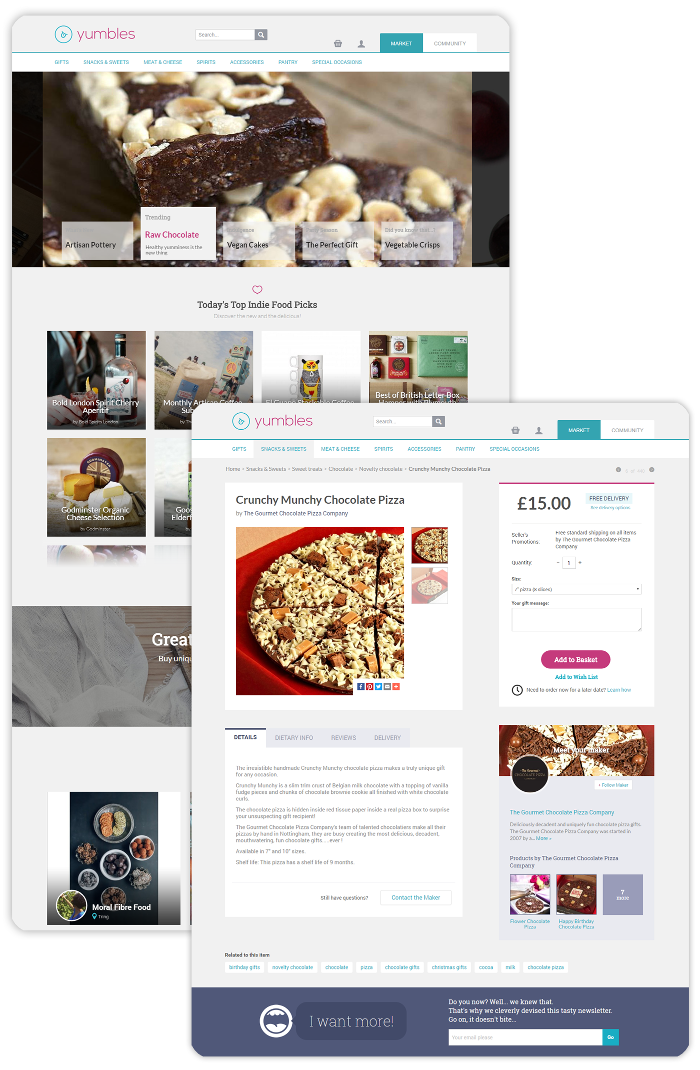
Wealden Fairs
Wealden Fairs marketplace sells products of Wealden Times Midsummer and Midwinter Fairs, which take place in the village of High Halden in England.
The idea of this marketplace is to allow people to buy products available at these fairs in any season, rather than only when the fairs take place. People can now enjoy “visiting” Wealden Times Midsummer and Midwinter Fairs 365 days a year.
The Wealden Fair marketplace looks cozy and has a great home style. For example, instead of the usual “cart” you see “bag” and when you’re buying products, you add them to this bag. The marketplace is full of little things like this that give it a more distinct look and feel.
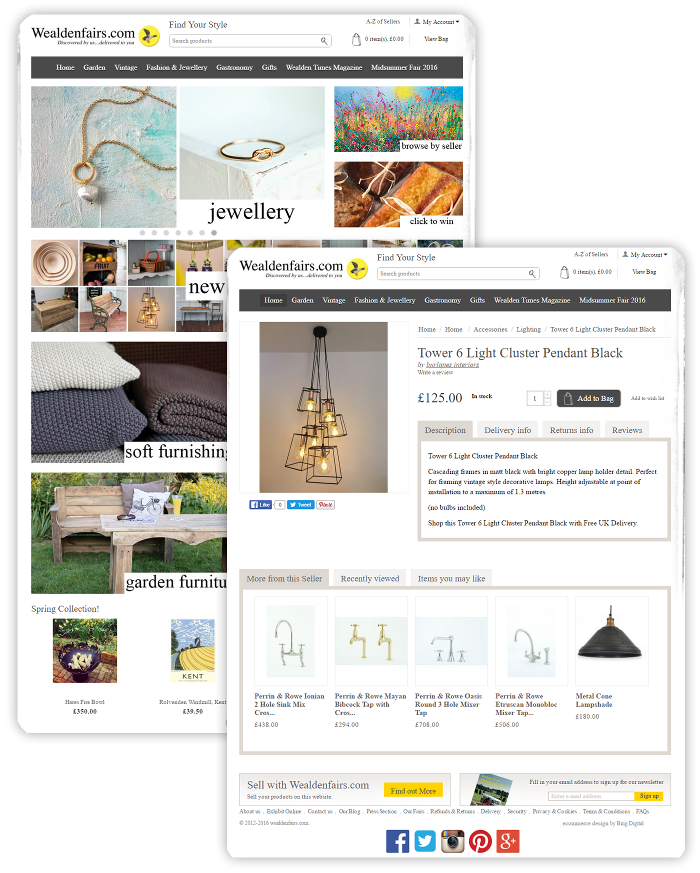
Country Culture
Country Culture marketplace offers designer goods from all over Australia. Every seller is an independent and talented designer showcasing his or her hand-made products on Country Culture’s storefront.
According to the marketplace founder, Angela Lavender, the idea of Country Culture is to bring talented designers from Australia together and showcase their talents to the whole world. In this marketplace, many of the pieces are one-off products, making them feel like perfect gifts!
Designers, as the sellers too, wrap and ship their products themselves. But Country Culture supplies them with original gift wrapping so that all the products come to customers beautifully wrapped into the branded Country Culture wrapping.

We hope we’ve inspired you with these Multi-Vendor malls. Tell us what comes to mind about this article in the comments.
Follow us on Facebook and Twitter to keep in touch with news. Also, check our forum for beta feature announcements, such as Vendor subscription plans for Multi-Vendor.
Vendor Subscription Plans in Multi-Vendor
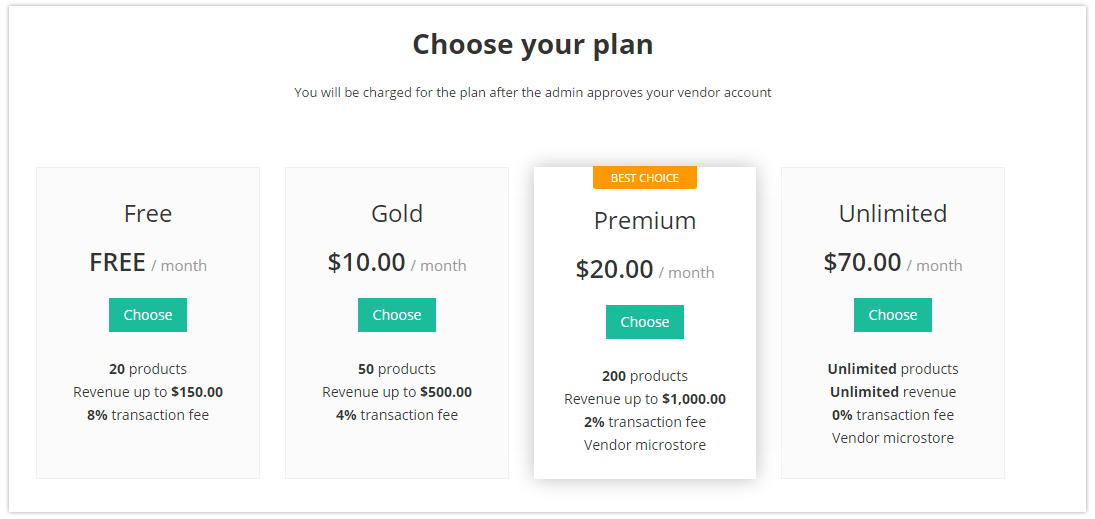
Hello!
Vendor subscription plans is another feature in version 4.4.1 worthy of mention. Did you know it got 325 votes on our UserVoice?
Previously, we were offering this feature as an early access add-on that you could download from your Help Desk. Now the Vendor Plans add-on is built into Multi-Vendor 4.4.1.
Why You Need a Subscription Model for Your Vendors
Owning a multi-vendor-based marketplace, you’re allowing other entrepreneurs to sell their products on your territory. You offer them your service. So you have two options when it comes to bringing in revenue: to charge by service or to apply a subscription model.
Here are 5 reasons why you should move from the old billing model to the new subscription model:
- Predictability. Your vendors pay a flat fee for the subscription: they always know how much they will pay you next month and thus can budget more accurately. You, as a marketplace owner, benefit from subscriptions in the same way—you have an accurate picture of incoming revenue.
- Simplified pricing. With subscription plans, your vendors always know how much they pay and what they get. Subscriptions organize pricing and make it more transparent.
- Customer retention. With the subscription model, your clients (vendors) are more likely to stay with you and increase their lifetime value.
- Marketing base. Email marketing is known as the most effective advertising method. With the subscription model, you can easily collect the email addresses of your target audience. Having a base of subscribers, you can market to them and to their friends through them to attract more vendors to your marketplace.
- Flexibility. You can configure subscription plans to find the best combinations of the price a vendor pays and the features he gets. A vendor can easily move to another plan with no investment loss.
We’ve prepared a video guide on how to manage vendor subscription plans, where you can learn about all the setting and the workflow:
Do you find vendor subscription plans useful? Let us know in the comments!
Follow us on Facebook and Twitter so as not to miss the latest news. To get more familiar with CS-Cart, check out our YouTube channel.
2 Tips on How to Showcase Your Products Right

Hello!
Adam is a business owner. He sells fedoras in his small shop in the city center. To make shopping easier and to drive more customers, Adam opens an online store, as well. Soon, though, he encounters a problem: his brick-and-mortar store is selling well but his online store isn’t bringing in new customers or income.
Adam’s actually got a fairly simple problem: he hasn’t presented his fedoras well! He quickly took product photos on his smartphone and copied poor descriptions from the manufacturer website. To drive more visitors to the online store and convert them into paying customers, Adam has to put effort into presenting his products in the right way.
While in brick-and-mortar stores people can see the actual products with their eyes and hold them with their hands, in online stores they see products as images. And, of course, in brick-and-mortar stores people can talk to the seller and find out about the features and benefits of the product—in online stores, they have to trust product descriptions.
In this post we’re going to talk about two key things you be doing when showcasing your products in your online storefront: product images and product descriptions.
1. Make Your Products Look Cool in the Images
In brick-and-mortar stores, customers can hold and try products before buying. When customers can see a product in real life and hold it in their hands, it weighs the scales in the seller’s favor.
In online stores, people obviously cannot try your products in the same way—which is why you need to take your online shoppers as close as possible to that feeling of seeing and holding your product, just like in a physical store. Professional product photos taken from different angles will help you.
The easiest way to get professional photos is to hire a pro photographer with a studio. Hiring a photographer may be expensive but you get results in the fastest and the easiest way. However, if you’ve got budgetary considerations, then it’s still possible to take cool product photos yourself.
Just be sure to remember three things: 1) use a neutral color background, 2) place the product on a stand, and 3) make sure the product is well-lit and doesn’t drop weird shadows. You don’t need tons of expensive equipment to take nice product photos but you need a few accessories:
- A DSLR or mirrorless camera or smartphone with a good camera (iPhone 5S and newer will do)
- An appropriate colored background (choose between white, grey, and black)
- A tripod for your camera or smartphone to keep it steady
- A light source (soft light from a window on a cloudy day is perfect). You can also build a light box yourself.
- A reflector to reflect soft light from the main light source
- An image editor like GIMP to edit photos: crop, brighten, or lighten. It’s free and is more than enough for basic photo editing.
Look at these well-lit, detailed photos. Don’t they make your mouth water already? :-)
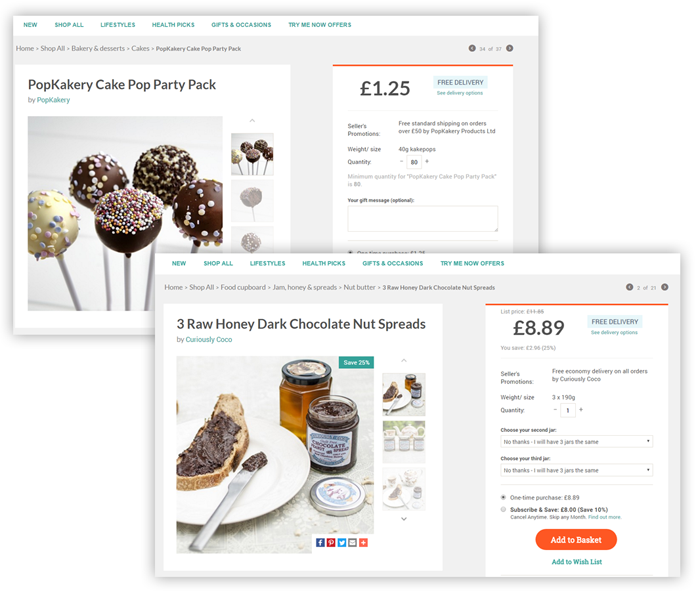
You can go even deeper in visualizing your products: order a custom modification that will allow your customers to rotate products with a mouse pointer on the product page. Look how it works in a furniture online store based on CS-Cart:
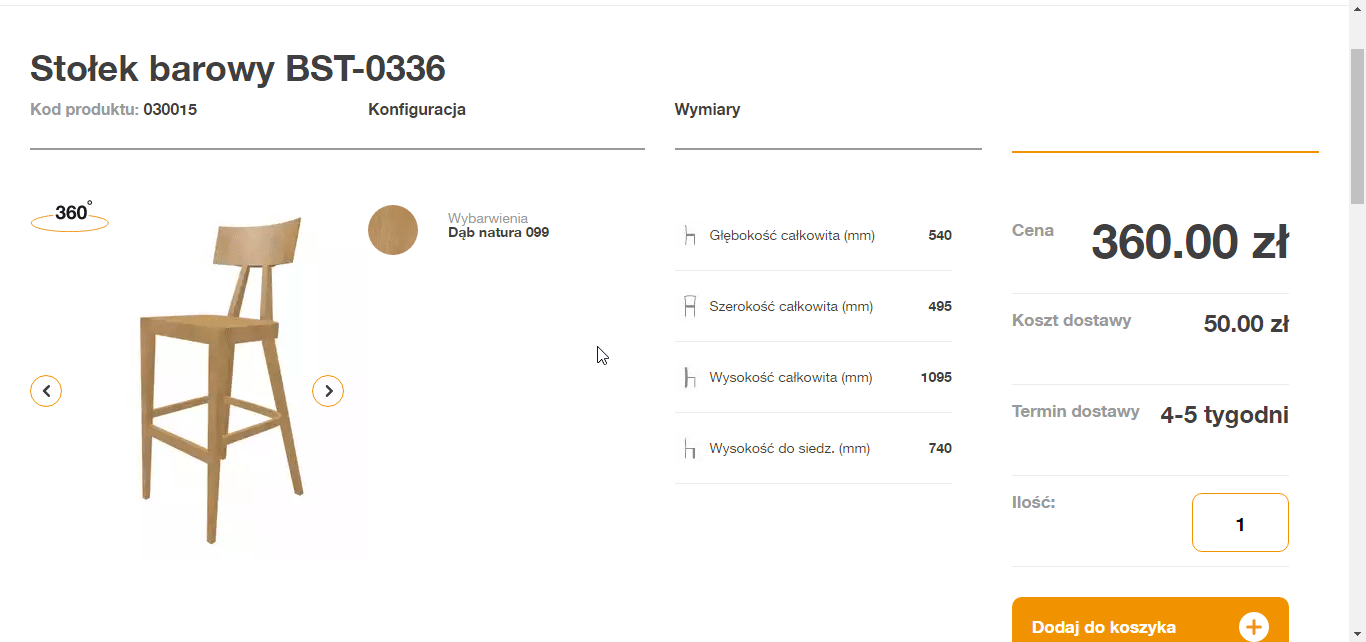
2. Compose Product Descriptions that Sell, not just Describe
Having attractive product photos is only half the battle. Product descriptions are important, as well: from a description a customer understands whether the product can solve his problem or not. That’s why product descriptions should not simply describe, they have to tell a customer what his or her problem the product can solve and how. For example, a laptop lets a customer work anywhere, not only at home or in the office; a fedora can become a finishing touch for a retro party costume.
Although any product solves some problem, different products need different approaches in writing descriptions. Here are eight guidelines on how to compose good product descriptions that sell:
- Show the product benefits the way that the customer understands them. Describe product advantages clearly without excessive words and technical terms. For example, don’t write that this electric guitar has a single coil pickup and a humbucker at the bridge position. Talk instead about what a customer gets from those: “This electric guitar suits melodic solos and bone-rattling riffs”. That’s all a customer needs to know.
- Don’t speak to the customer with fake phrases and silly bunkum. These days, everybody is immune to such statements as “This smartphone is developed by leading professionals and uses the latest innovative technologies”. There’s no point in saying things like this, because you can’t prove anything with facts. People don’t believe your words, no matter how beautiful, unless you prove them with facts.
- Personalize product descriptions. First, decide who your ideal customer is. Then address your ideal customer directly as if he’s standing in front of you. Use the words and the kind of speech your ideal customer uses. Talk to your customer.
- Use words that call for pleasant feelings. Words such as “crispy”, “creamy”, and “smooth” nudge a customer closer to the purchase, because he wants to experience those feelings. Be careful not to overuse these kind of words.
- Entertain the customer with a short story. Tell the customer a catching story about your product. A paragraph is enough to relax the customer and keep him on the product page longer.
- Make the customer’s imagination work for you. When reading a product description, the customer should feel that he already owns the product. Tell the customer what will happen and how his life will change when he gets the product. Sell a dream.
- Show the customer that the product is much in-demand. People prefer popular products. Before buying, customers usually read reviews and look for testimonials from real people. Add a testimonial of a satisfied customer to the product description, plus attach a photo of that customer. You can also write that the product is this month’s bestseller.
- Think through the structure of a description. Writing a long description in plain text is a bad idea. There’s a better chance that a customer reads the whole description if you keep it short, well-structured, and well-formatted. Divide the text into paragraphs, add headers, choose a bigger font size, and format everything. Kind of like how we’ve done here, for example.
Check out this coffee description: it’s short and well-structured, activates the customer’s imagination, and entertains with a short story:
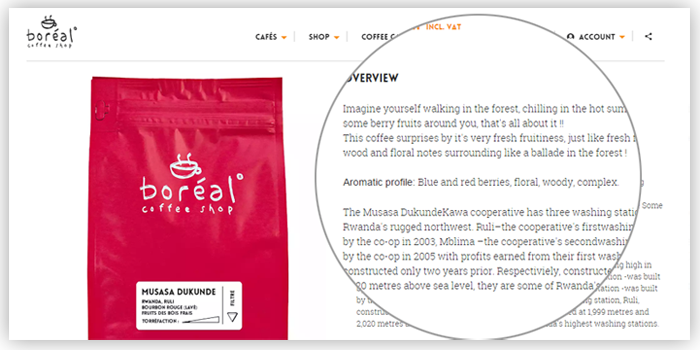
Hope our advice will come in handy and you’ll be able to drive more customers thanks to cool product images and great product descriptions!
Follow us on Facebook and Twitter to keep up with CS-Cart news. And check out our YouTube channel to learn how to manage your CS-Cart store.